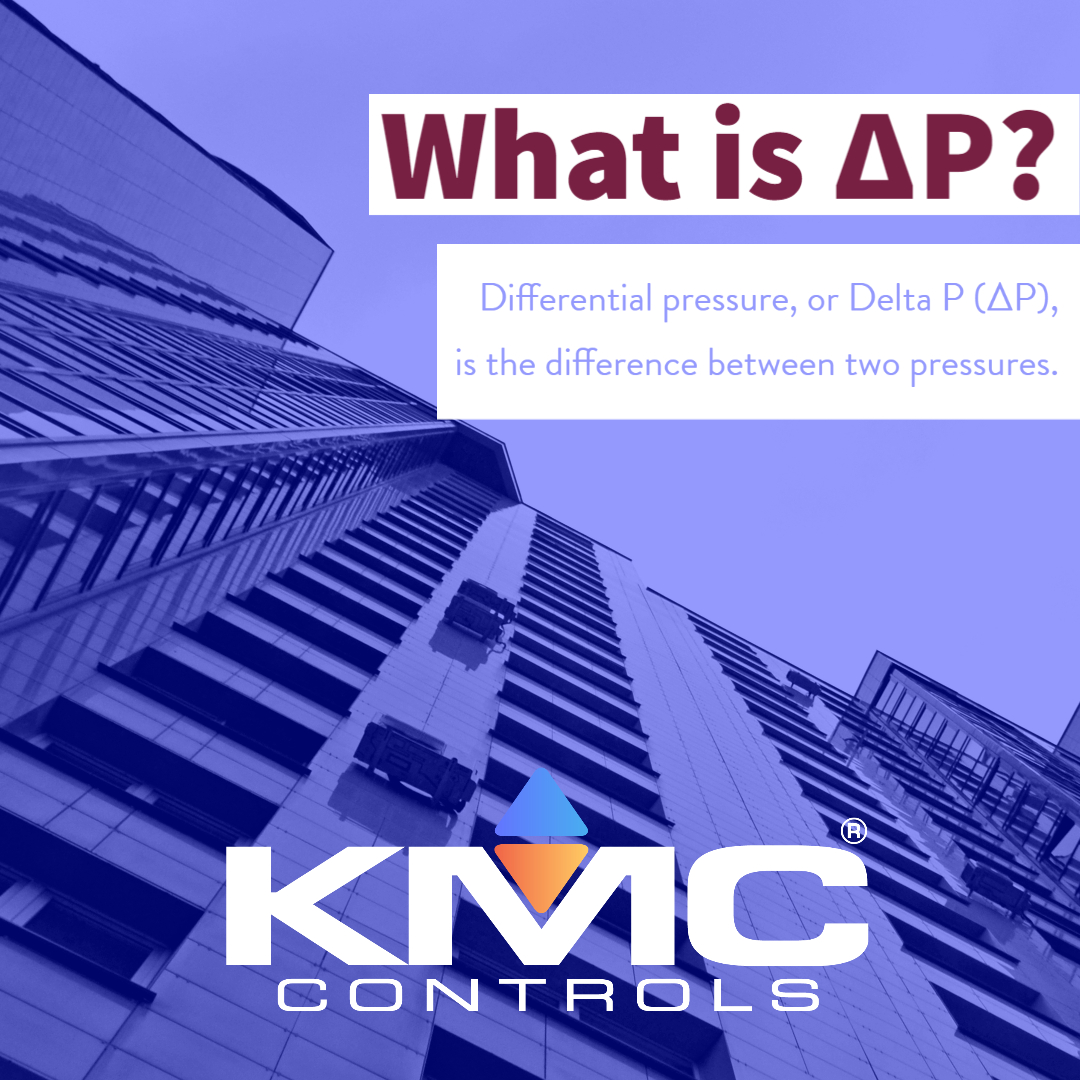Many applications, such as airflow in high purity environments, hospitals, and education require heating, ventilation, and air-conditioning (HVAC) systems to maintain critical performance conditions. At KMC Controls we manufacture high quality pressure measurement solutions to monitor and control these critical building systems.
Differential pressure, or Delta P (ΔP), is the difference between two pressures. Delta P measures a variety of conditions such as building pressurization, filter loading, static pressure, tank level, velocity and more.
For normal operation, it’s common to position filters to capture solids and particulates in HVAC systems. The filter, by necessity, obstructs airflow through the duct, which lowers the pressure on the downstream side.
The filter removes impurities from the air, the smaller a filter’s pours, the greater the friction. The more friction, the greater the pressure drop. Over time, as the filter does its job, contaminants and particulates will build up, further reducing flow through the filter on the downstream side, increasing Delta P.
Monitoring and controlling differential pressure can make buildings and rooms more comfortable and safer to occupy. Differential pressure is maintained by measuring and controlling four elements in an HVAC system: volume, channel pressure, room pressure, and filters.
Improperly regulated building pressurization schemes allow airborne contaminates and unconditioned outside air to enter buildings, leading to mold, discomfort, higher energy costs and trouble controlling indoor air quality (IAQ). For example, hospitals and pharmaceutical manufacturers use differential pressure sensors in their building systems to help prevent contamination from spreading through the air, as well as creating positive- or negative-pressure rooms to prevent the ingress or egress of harmful particles.
The majority of HVAC systems will introduce outside air into the building for fresh air or use outside air to cool the building when possible. Here, differential pressure is measured to trigger exhaust fans or dampers to ensure a mixture of fresh and conditioned air.
Monitoring and controlling differential pressure can reduce energy consumption by improving the efficiency of heat exchange to control a room’s temperature and humidity. This also improve energy efficiency by operating fans only as needed. A lack of measurement creates system problems, creating additional stress on equipment and leading to costly repair / replacement.
For normal operation, it’s common to position filters to capture solids and particulates in HVAC systems. The filter, by necessity, obstructs airflow through the duct, which lowers the pressure on the downstream side.
A filter removes impurities from the air by restricting the path that airborne pollutants may freely flow. The smaller a filter’s pores, the greater the friction. The more friction, the greater the pressure drop. Over time, as the filter does its job, contaminants and particulate will build up, further reducing flow through the filter on the downstream side, increasing Delta P.
By placing sensors both before and after the filter, the building automation system can measure the difference between the high side and low side pressures to calculate the Delta P.
Prior to the installation of the pressure sensors, a technician can determine the maximum saturation point, and then sets an alarm so maintenance technicians in the future will know that it’s time to replace the filter without having to go in and further inspect it. This makes maintenance much more efficient and cost-effective.
Comparing velocity pressure, head pressure created by the movement of liquid or air through a space (high) to static pressure, pressure created by liquid or air pushing on the walls of the ductwork or mechanical equipment (low) across a device with known properties like the KMC SSS-1XXX, fan piezometer rings, or orifice plates, is a common velocity measurement technique.
KMC Controls® has recently developed the KMC Conquest™ Airflow Measurement System, also known as AFMS. The KMC Conquest AFMS was developed to provide accurate and reliable supply, outside, and return air flow measurements. KMC Controls’ AFMS uses differential pressure sensors at the supply end instead of the outside airflow. By measuring this way, you won’t have to worry about the drawbacks of using differential pressure sensors to measure outside airflow.
The importance of Delta P (or differential pressure) is crucial to HVAC systems in helping keep workplaces safe, healthy, and energy efficient.
 Cart
Cart
